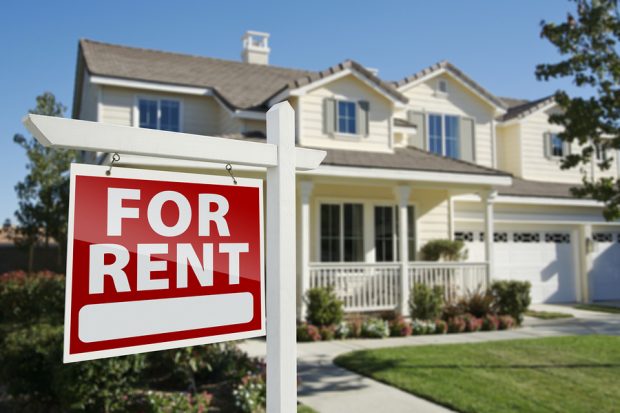We are often asked by our clients if one should buy and hold or fix and flip properties. In other words, should you invest in real estate for the long term, banking on rental income and potential capital appreciation, or are you better off investing for the short term and reaping in quick profits? The answer is: Yes! Read on to see what we mean.
There are pros and cons to short and long term investments, not just in real estate, but also in any security. Some companies listed in the stock market exchanges show moderate, steady growth over several years, while rewarding their investors with periodic payouts in the form of dividends. Other companies offer investors a relatively low entry price, with a forecast potential of quick growth. Investors in such companies bank on a quick rise of their share price, at which time they may choose to sell and bank the profits. Which one sounds like a better investment? They both do, because it depends.
It ultimately comes down to choosing one or a blend of both methods that will help you achieve your investment financial goals. The US Investor Group team is experienced in both investment strategies, and you can find details of the two real estate investment models: a fix and flip project as well as a buy and hold project. Each strategy comes with its own ups and downs, and in order to help you decide which one is better for you, we will break down both strategies in detail.
Buy and Hold

How it works
Investors interested in buying and holding should look in neighborhoods that are stable and attractive to tenants. There are several factors that come into play, such as the median income, vacancy rates, employment statistics, and proximity to good schools and parks. In addition, proximity to highways and bus stops is an important factor that should not be overlooked. We have a keen understanding of what tenants demand, from our long experience in property rentals.
There are several things we consider when evaluating Detroit investment properties. Among the most important is the neighborhood and surrounding area. We take into consideration many important demographic statistics mentioned above, including population density, median income levels, and vacancy rates. We also look at every investment to determine its feasibility from a real estate perspective: resale value, potential rental amount, scope of any rehab work, carrying costs (taxes, insurance).
Benefits
In this model, properties are mostly purchased with little need of renovation, if any. Typically, such investment properties are fully renovated, so what you get is what you see: the finished product. There are less risks of unexpected expenses, as long as the renovations were completed properly. These houses are usually tenanted when they're sold, thus performing from the first day of purchase.
As you hold on to your investments, you are banking not only on the stream of rental income, but also on the increase of property value, also known as capital appreciation. With such appreciation of value, equity in your investments can be leveraged on order to finance future purchases and growth of your portfolio.
Moreover, since you are not selling the property for a quick profit, the increase in value is categorized as "unrealized gain" for tax purposes, meaning that you do not pay taxes on the profits until you sell the property or "realize" the gains.
Risks
The risks of the buy and hold strategy is primarily prolonged vacancies, high tenant turnover cost, and low appreciation.
In order to mitigate such risks, it is important that you work with a team that is familiar with the local real estate market, who know each neighborhood and street. Vacancies are to be expected, and the time between tenanting the property can be minimize by choosing the right property, in the right neighborhood. A property that can be purchased for $50k and rented for $900/month in the right neighborhood can outperform a $30k property that can be rented for $600/month in the wrong neighborhood. This is because the latter can go vacant for several months every year, thus netting much less income and return on investment.
Summary
In summary, the buy and hold strategy is beneficial over time as it provides a continuous source of rental income, as well as capital appreciation. It is well suited for building a portfolio for retirement, saving for kids college, or events that come up later in life. Like any investment, it is not void of risks, however, they can be mitigated with proper planning and working with the right team.
Fix and Flip

How it works
As the name implies, the fix and flip model, also known as buy and flip strategy, involves purchasing a distressed property for a relatively low price, renovating it, and then selling it for a profit.
The strength in the fix and flip strategy is also choosing the right property. Investors interested in this model must do their due diligence. We have published a detailed guide on conducting proper due diligence, in which we explore the effect of location, neighborhood, vacancy rates, and all costs included in the purchase of investment property.
Benefits
This model is built on short term investments, such that your funds are not tied up for a long term. This is a great advantage to have immediately available liquidity for future investments.
Due to the flipping nature of this model, profits are immediately realized, thus reducing the risks of fluctuating property values and other changes in the real estate market. Moreover, the risk of property maintenance is eliminated.
In addition, you avoid having to tenant the property and deal with the risk of prolonged vacancies, and expensive turnover costs.
Risks
While this strategy comes with several benefits, it is one without any risks. For example, a mistake in assessing the cost of property renovation can be very costly. Similarly, a wrong assessment of the future sale price after renovations can eat into profits.
Because costs can be more than expected, it is necessary to partner with the right team. Our team of experience real estate professionals, and renovation experts, can properly guide you in acquiring the right property for the right price.
Summary
The fix and flip model can result in excellent profits, if done properly. However, it can also be a risky strategy if done hastily. Due diligence is required in order to avoid unexpected costs and prolonged delays. It is important to partner with a qualified and experienced team to maximize returns and reduce risks.
In Conclusion
Both investment models can be highly rewarding. The most important thing is to partner with the right team. Experts of the local real estate market, trends, neighborhoods can help you avoid mistakes and structure a portfolio that balances risks and rewards to meet your financial objectives.
Because real estate investing is never a one-size-fit-all, we are the only company in our market that presents multiple real estate investment strategies to our clients.
Contact us today, let's chat and perhaps schedule a one-on-one tour with you to see the assets in person.


